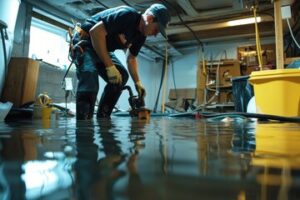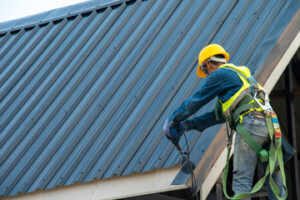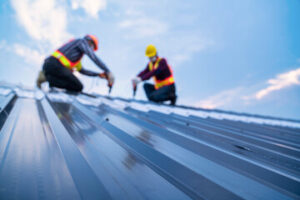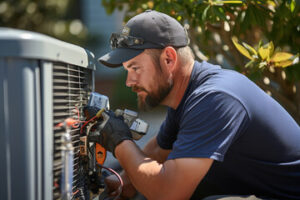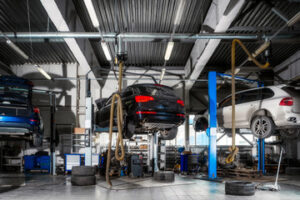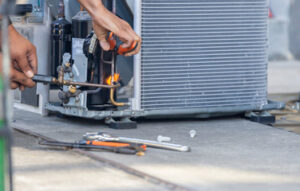Adding a fence to your property is a great way to increase privacy, security, and add beauty. It’s important to hire a professional fence contractor to ensure the installation process is safe and adheres to local building codes and regulations.

Fencing is a smart investment that increases property value in up and down economies. Professional installation and quality materials are the key to a longterm valuation. Contact Fence Company Summerville SC for professional help.
The fence company you choose should have the expertise necessary to deliver high-quality work. Their craftsmanship is honed through years of hands-on experience, resulting in precise measurements and sturdy installation. They also know the local building codes and regulations, so your fence is built properly and complies with the law. This ensures that your fence is safe and secure and will stand the test of time.
They can recommend fencing materials and designs that meet your specific needs. They can also advise you on the best way to maximize your property’s value by adding a fence that fits with your home and yard design. They can also provide tips on maintenance that extend the life of your fence.
Inexperienced DIY fence installation often leads to costly mistakes that require repairs, and hiring a professional prevents these problems from occurring. They have the knowledge and tools to ensure your fence is straight, level, and securely anchored, which can save you money in the long run.
A good fence company will be familiar with the latest innovations in the industry and can offer advice on suitable materials for your home. For example, they can advise you on whether a wooden privacy fence or a decorative wrought iron design is better for your home. In addition, they will be familiar with local zoning laws and regulations, which can save you from the hassle of having to get permits.
The best fence companies will be easy to communicate with and will address your concerns before, during, and after the project. They will be able to answer any questions you have and will give you an accurate estimate. They should also be able to provide you with warranty coverage on their work.
Experience
Adding a fence to your property can add privacy, security, and beauty. However, it’s important to choose the right contractor for the job. An experienced contractor will be able to provide high-quality services and address any concerns you may have during the project. Look for a contractor who communicates clearly and offers detailed explanations of their process. It’s also helpful to familiarize yourself with local zoning laws and homeowner association regulations regarding fencing. This will help prevent any unexpected delays or issues down the road.
An experienced fence company will have extensive knowledge of a variety of materials, designs, and installation techniques. They will also be able to recommend a style and material that best fits your home. For instance, a wrought iron fence might be ideal for an historic home, but it may not be appropriate for a modern ranch house.
Ask potential contractors about their experience in the industry and whether they have worked with a range of clients. Moreover, check whether they are licensed and insured to ensure that you’re protected in case of any accidents or damage during the project.
Once you’ve narrowed down your list of candidates, request references from each business. You can also search online for customer reviews to get a better sense of how each fence company performs. Then, choose a company that can provide you with quality work at an affordable price. It’s also important to avoid settling for the lowest bid, as cheap doesn’t always mean high-quality work. A reputable fence company will provide you with a fair and transparent quote that aligns with your needs. Moreover, they will be happy to answer any questions you might have about their pricing structure.
Customization
Whether you want to add a little personality, make your property more secure, or address specific functional needs, customizable fences offer a variety of ways to achieve your vision. Custom fencing experts can help you choose from a wide range of materials, designs, and accessories, while also taking into account local regulations and your home’s exterior architecture.
The most common type of customizable fence is made of wood. This classic option is popular for its natural aesthetic and welcoming ambiance. It’s available in a variety of colors and finishes, including staining or painting, to prevent damage from weather and insects. Metal fences are another common customization choice, offering superior strength and durability. They are ideal for areas that require high security and can be customized in terms of height, shape of bars, and color.
Other popular options include aluminum and wrought iron, which are available in various styles and sizes. They provide a sleek, elegant appearance but may be more expensive than other types of customizable fences. Lastly, composite fences are a versatile option that combine the benefits of wood and metal, with the ability to customize height and color.
Other customization options include gates, lattice panels, and integrated lighting. Customized gates are a great way to welcome guests and enhance your privacy, while lattice panels can be used to create a unique design or add visual appeal. Finally, integrated lighting can deter intruders and improve visibility around the yard.
Warranty
A good fence company will offer a warranty to cover any issues that may arise after the installation. This is important because fences are a major investment that provides security, privacy, and curb appeal to your home or business. Nobody wants to invest all that money and time into something that could fail due to natural occurrences or other issues out of the manufacturer’s control.
Every fence manufacturer will have their own warranty policy that details what is covered and what is not. Typically, warranties will cover things like manufacturing errors, improper installation (if done by an unlicensed contractor), and natural occurrences. Normal wear and tear, however, is usually not covered by warranties.
Choosing a licensed and insured fence contractor will also help to ensure that your fence has the best chance of being covered under a warranty. This is because many fencing material manufacturers will only honor their warranties if they are installed by qualified contractors. Unlicensed contractors will likely void the manufacturer’s warranty, which means you would have little to no protection if something goes wrong with your fence.
Having a basic understanding of how fencing warranties work can save you a lot of headache and stress in the long run. In this article, we will take a closer look at some of the factors that can void a warranty and how you can avoid them. Read on to learn more! We will also explain some common warranties and what they are designed to protect against. With this information in hand, you will be better prepared to make an informed decision about which fence is right for you. If you still have questions, feel free to reach out to us. We will be happy to provide additional details and answer any other questions you might have about our products or services.
Installation
Having a fence installed on your property is one of the best ways to add value, security, and beauty to it. However, it’s important to choose a Rutherford fence installation company that has the right experience and reputation. This will ensure your new fence is well-designed and constructed to last, providing privacy, security, and curb appeal for years to come.
A reputable fence contractor will offer you a variety of high-quality materials to choose from, such as wood, vinyl, aluminum, and chain-link. They’ll also be able to explain the benefits and drawbacks of each material, helping you make the right choice for your needs. Additionally, they’ll be able to help you decide what height and finish will work best for your property.
Another benefit of choosing a professional fence contractor is that they’ll be familiar with your local building codes and regulations. This will ensure your new fence is built correctly and adheres to all laws. In contrast, unlicensed contractors often build subpar fences that may not be up to code and can even put you at risk of legal action.
The decision to have a fence constructed on your property is a significant investment, and you should always hire a licensed and bonded fencing contractor. Choosing one with the right experience, reputation, quality of materials, warranty, licensing and insurance, customization options, and customer service will guarantee that you’re getting the highest-quality fence in your area. This will protect you from costly mistakes that could potentially put your family, pets, and valuables at risk. It will also allow you to take advantage of additional manufacturer warranties, which may not be available if the project isn’t completed by a licensed professional.
